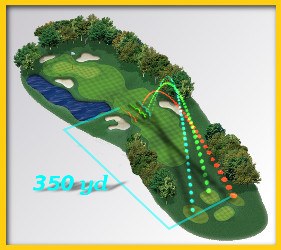
In golf, the term “carry” refers to the distance a golf ball travels through the air from the point of impact to the point where it first lands on the ground. It is often used in the context of assessing the length a golfer can hit a shot or when discussing the length and difficulty of a particular hole.
The carry distance is an important factor in golf, as it helps golfers determine the appropriate club selection for a specific shot. Each golf club has a different potential carry distance based on factors such as the loft of the club, the golfer's swing speed, and the quality of contact with the ball.
When planning a shot, a golfer will consider the carry distance required to clear a hazard, such as a bunker, water hazard, or a fairway bunker. They need to calculate the carry distance accurately to ensure they have enough power and loft in their shot to clear the obstacle and safely reach the desired target area.
The carry distance can also be influenced by external factors like wind speed and direction, temperature, altitude, and the condition of the golf ball. These factors may increase or decrease the actual distance the ball carries through the air.
Professional golfers often have precise knowledge of their carry distances with each club, allowing them to make strategic decisions on the course. They might aim for specific landing areas based on their carry distance to set up the most favorable approach to the green.
For amateur golfers, understanding their average carry distances with different clubs can help in club selection and course management, enabling them to make more informed decisions during their rounds.
Overall, carry is a key measurement in golf, representing the distance a golf ball travels in the air before it hits the ground, and it plays a crucial role in shot planning and execution on the course.
Carry – The measurement of distance the ball travels in the air in order to reach a target. Example. “You must carry 150 yards to reach safely past the water”





